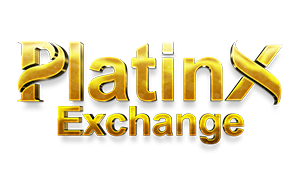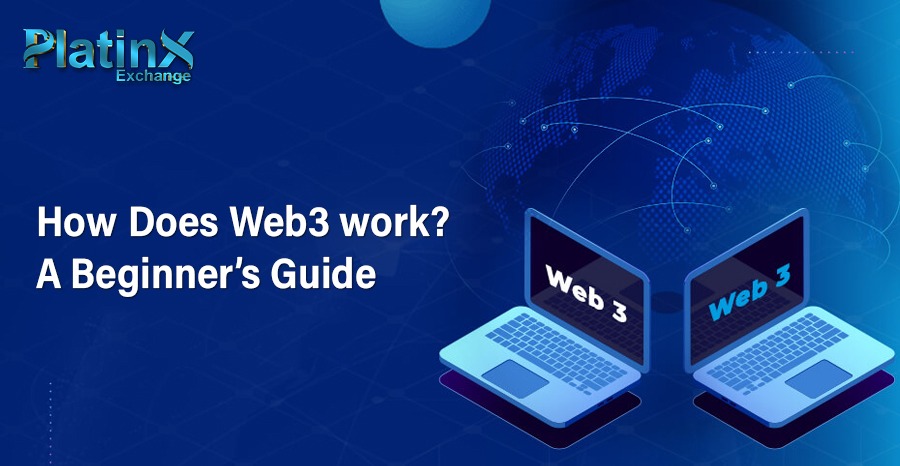Web3 is a term that refers to the next generation of the internet, where users can interact with decentralized applications (DApps) that run on peer-to-peer networks, without relying on intermediaries or centralized servers. Web3 aims to create a more open, fair, and secure web, where users have more control over their data, identity, and digital assets.
In this blog post, we will explain what Web3 is, how Web3 works, and some of the applications that use Web3 technologies such as blockchain, artificial intelligence (AI), and the Internet of Things (IoT). We will also provide some resources and tips on how you can get started with Web3 and join the movement.
What is Web3 and Why Do We Need It?
Web3 is not a single technology or platform, but rather a vision and a movement for a better web. Web3 is also sometimes called the decentralized web, the open web, or the semantic web.
To understand what Web3 is, let’s first look at the evolution of the web so far:
- Web1: The first version of the web, which emerged in the 1990s, was mainly static and read-only. Users could access information from websites but had limited interaction or participation. The web was dominated by a few publishers and service providers, who controlled the content and the infrastructure.
- Web2: The second version of the web, which emerged in the 2000s, was more dynamic and interactive. Users could create and share content, communicate and collaborate, and access various online services and platforms. The web became more social and user-generated, but also more centralized and monopolized. The web was dominated by a few giant corporations, who collected and exploited the data and the value of the users.
- Web3: The third version of the web, which is emerging in the 2020s, is more decentralized and distributed. Users can interact with DApps that run on peer-to-peer networks, without relying on intermediaries or centralized servers. The web becomes more open and transparent, but also more secure and resilient. The web is powered by the users, who own and control their data, identity, and digital assets.
Limitations of Web2
- Privacy and security: Web2 platforms collect and store massive amounts of personal data from users, which can be hacked, leaked, sold, or manipulated. Users have little or no control over their data, identity, or digital assets. Web2 platforms can also censor, and manipulate the users, based on their interests or agendas.
- Inefficiency and scalability: Web2 platforms rely on centralized servers and intermediaries, which can be slow, expensive, or unreliable. Web2 platforms can also suffer from network congestion, downtime, or outages, which can affect the performance and availability of the services and applications.
- Inequality and power: Web2 platforms create a winner-take-all economy, where a few giant corporations capture most of the value and influence of the web, while the majority of the users and creators get little or no reward or recognition. Web2 platforms can also exploit, exclude, or discriminate against users, based on their location, identity, or preferences.
Web3 aims to solve these problems and limitations, by creating a more open, fair, and secure web, where users have more control over their data, identity, and digital assets. Web3 also aims to create a more diverse, inclusive, and participatory web, where users can contribute, collaborate, and co-create value and innovation.
How Does Web3 Work and What Are the Key Technologies?
Web3 works by using various technologies and protocols that enable the creation and operation of DApps, which are applications that run on peer-to-peer networks, without relying on intermediaries or centralized servers.
Some of the key technologies and protocols that enable Web3 are:
- Blockchain: Blockchain is a distributed ledger that records transactions and events in a secure, transparent, and immutable way. Blockchain enables the creation and exchange of digital assets, such as cryptocurrencies, tokens, or NFTs, which are unique and scarce representations of value or ownership. Blockchain also enables the creation and execution of smart contracts, which are self-enforcing agreements that run on the blockchain, without the need for intermediaries or third parties. Blockchain provides the foundation and the infrastructure for Web3, as it enables trustless, permissionless, and censorship-resistant transactions and interactions.
- Artificial Intelligence (AI): AI is the field of computer science that deals with creating machines or systems that can perform tasks that normally require human intelligence, such as learning, reasoning, or decision-making. AI enables the creation and improvement of DApps, by providing various capabilities and functionalities, such as natural language processing, computer vision, speech recognition, or recommendation systems. AI also enables the creation and optimization of Web3 networks, by providing various techniques and algorithms, such as machine learning, deep learning, or reinforcement learning. AI provides the intelligence and the innovation for Web3, as it enables adaptive, personalized, and autonomous applications and systems.
- Internet of Things (IoT): IoT is the network of physical devices, sensors, and actuators that are connected to the internet, and can collect, process, and exchange data. IoT enables the creation and integration of DApps, by providing various sources and types of data, such as location, temperature, motion, or biometrics. IoT also enables the creation and expansion of Web3 networks, by providing various devices and nodes, such as smartphones, wearables, or smart home appliances. IoT provides the data and the connectivity for Web3, as it enables real-time, contextual, and interactive applications and services.
These technologies and protocols are not exclusive or exhaustive, but rather complementary and synergistic. Web3 is not a single technology or platform, but rather a combination and a collaboration of various technologies and protocols, that work together to create a more open, fair, and secure web.
What Are Some of the Applications of Web3?
Web3 is not a theoretical or futuristic concept, but rather a practical and present reality. Web3 is already here, and there are many applications and examples of Web3 that are already live or in development, across various domains and industries, such as:
- Finance: Web3 enables the creation of decentralized finance (DeFi), which is a system of financial services and products that run on the blockchain, without the need for intermediaries or centralized institutions. DeFi enables users to access various financial functions and opportunities, such as lending, borrowing, trading, investing, or saving, in a more open, transparent, and inclusive way.
- Social: Web3 enables the creation of decentralized social media (DSM), which is a system of social platforms and networks that run on the blockchain, without the need for intermediaries or centralized corporations. DSM enables users to create and share content, communicate and collaborate, and access various social functions and features, in a more secure, private, and rewarding way.
- Gaming: Web3 enables the creation of decentralized gaming (DG), which is a system of gaming platforms and experiences that run on the blockchain, without the need for intermediaries or centralized servers. DG enables users to play and create games, own and trade digital assets, and access various gaming functions and features, in a more immersive, interactive, and fun way.
- Art: Web3 enables the creation of decentralized art (DA), which is a system of art platforms and markets that run on the blockchain, without the need for intermediaries or centralized galleries. DA enables users to create and collect art, own and trade digital assets, and access various art functions and features, in a more expressive, authentic, and valuable way.
These are just some of the domains and industries that are being transformed by Web3, but there are many more, such as education, health, commerce, and governance. Web3 is not limited by any boundaries or borders, but rather enabled by the imagination and the innovation of the users and the creators.
How Can You Get Started with Web3 and Join the Movement?
Web3 is not a closed or exclusive club, but rather an open and inclusive community. Web3 is not a top-down or centralized system, but rather a bottom-up and distributed network. Web3 is not a passive or static web, but rather an active and dynamic web.
If you are interested in Web3 and want to get started with Web3 and join the movement, here are some steps and tips that you can follow:
- Learn: The first step is to learn more about Web3 and its technologies and protocols, such as blockchain, AI, and IoT. You can find various resources and materials online, such as blogs, podcasts, videos, courses, or books, that can help you understand the basics and the concepts of Web3. You can also find various communities and forums online, such as Reddit, Twitter, Discord, or Telegram, that can help you connect with other Web3 enthusiasts and experts, and ask questions and get answers.
- Explore: The second step is to explore more about Web3 and its applications and examples, such as DeFi, DSM, DG, or DA. You can find various platforms and websites online, such as DappRadar, State of the DApps, or Dapp.com, that
- Experiment: The third step is to experiment with Web3 and its applications and examples, such as DeFi, DSM, DG, or DA. You can find various tools and wallets online, such as MetaMask, Trust Wallet, or Coinbase Wallet, that can help you access and interact with Web3 applications and networks, using cryptocurrencies, tokens, or NFTs. You can also find various platforms and websites online, such as OpenSea, Rarible, or NFT Showroom, that can help you create and collect digital assets, such as art, music, or games.
- Contribute: The fourth step is to contribute to Web3 and its applications and examples, such as DeFi, DSM, DG, or DA. You can find various opportunities and challenges online, such as hackathons, bounties, or grants, that can help you build and improve Web3 applications and networks, using your skills and talents, such as coding, designing, or writing. You can also find various communities and organizations online, such as DAOs, cooperatives, or collectives, that can help you collaborate and co-create value and innovation, using your ideas and passions, such as art, education, or social impact.
These are just some of the steps and tips that you can follow to get started with Web3 and join the movement, but there are many more, depending on your interests and goals. Web3 is not a fixed or final web, but rather an evolving and growing web.
Conclusion
Now you know how Web3 works, and its applications. It is the next generation of the internet, where users can interact with decentralized applications that run on peer-to-peer networks, without relying on intermediaries or centralized servers. Web3 aims to create a more open, fair, and secure web, where users have more control over their data, identity, and digital assets.
Web3 is powered by various technologies and protocols, such as blockchain, AI, and IoT, that enable the creation and operation of DApps, across various domains and industries, such as finance, social, gaming, or art.
Web3 is also driven by various users and creators, who can learn, explore, experiment, and contribute to Web3 applications and networks, using various tools and wallets, platforms and websites, opportunities and challenges, communities and organizations.
Web3 is not a single technology or platform, but rather a vision and a movement for a better web. Web3 is not a closed or exclusive club, but rather an open and inclusive community. Web3 is not a passive or static web, but rather an active and dynamic web.

